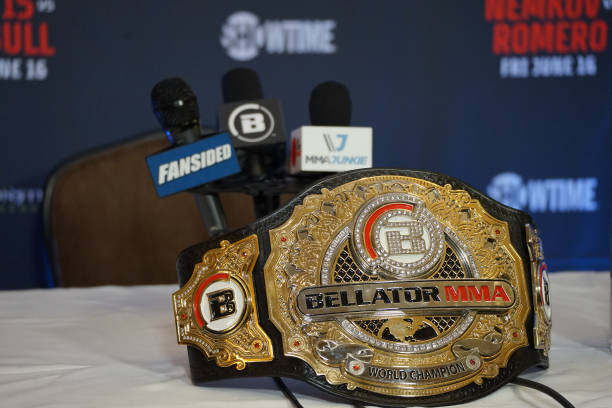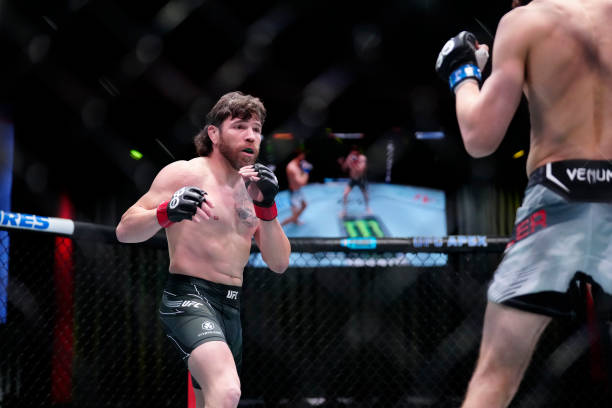What is MMA?
What is MMA, Mixed Martial Arts (MMA) is a dynamic combat sport that blends techniques from various disciplines such as wrestling, boxing, Brazilian Jiu-Jitsu, and Muay Thai. Fighters engage in both striking and grappling, aiming to defeat opponents through a combination of skill, strategy, and athleticism. MMA has gained global popularity for its intense and diverse action.

Mixed Martial Arts (MMA) continues to captivate fans worldwide with its dynamic blend of striking, grappling, and ground fighting techniques.
What is MMA fighting?
What is MMA fighting, Mixed Martial Arts (MMA) fighting is a full-contact combat sport that combines techniques from various disciplines, including boxing, wrestling, Brazilian Jiu-Jitsu, Muay Thai, and judo. Fighters compete in a cage or ring, using striking and grappling techniques to defeat their opponents. MMA has gained popularity worldwide for its intense, dynamic matches.
What is grappling in MMA?
What is grappling in MMA, Grappling in MMA refers to the close combat aspect of the sport, focusing on clinching, takedowns, and ground fighting. Fighters utilize techniques from wrestling, Brazilian Jiu-Jitsu, and judo to control opponents, gain advantageous positions, and execute submissions like chokes and joint locks. Grappling skills are essential for success in MMA competitions.
What is the difference between UFC and MMA, The Ultimate Fighting Championship (UFC) is a prominent mixed martial arts (MMA) promotion, but the terms are often used interchangeably. However, MMA encompasses various organizations and styles, while the UFC is a specific company organizing MMA events. Essentially, UFC is a premier platform within the broader world of MMA.

What is MMA and WWE, WWE (World Wrestling Entertainment) and MMA (Mixed Martial Arts) are distinct forms of combat entertainment. WWE focuses on scripted, choreographed matches with predetermined outcomes, emphasizing storytelling and character development. In contrast, MMA features real fights with athletes using various martial arts disciplines, aiming to defeat opponents through skill and strategy. The two offer different experiences, blending athleticism and entertainment differently.
What is the difference between MMA and boxing, The main difference between MMA (Mixed Martial Arts) and boxing lies in their rules and techniques. Boxing focuses solely on punching with hands while wearing gloves, aiming to knock out opponents within a square ring. MMA incorporates various martial arts disciplines, allowing striking and grappling techniques, and takes place in a cage or ring.

How many MMA fighters are there, According to data compiled from Boxrec, UFC, Bellator, and the World Series of Fighting, there are roughly 20,000 active professional boxers worldwide, alongside over 1,000 professional MMA Athletes.
The Evolution and Impact of MMA Arts: key Events and Influencial figures
- Initially introduced as a contest to determine the most effective martial arts for real unarmed combat, fighters from various disciplines competed against each other with minimal regulations. Over time, individual fighters began integrating techniques from multiple martial arts into their repertoire. In response to safety concerns, regulatory compliance, and the desire for broader mainstream acceptance, MMA promoters implemented additional rules. These changes have led to a surge in the sport’s popularity, with its pay-per-view events now rivaling those of boxing and professional wrestling.
- Ancient China:
- Combat sport appeared as Leitai.
- Leitai was a no-holds-barred sport combining Chinese martial arts, boxing, and wrestling.
- Ancient Greece:
- Pankration was a sport featuring grappling and striking.
- It combined wrestling and boxing traditions.
- First included in the Olympics in 648 BC.
- Allowed all strikes and holds except biting and gouging.
- Matches continued until one fighter could not continue or submit.
- Highly popular, with no rounds in the competition.
- Roman Influence:
- Statues honoring remarkable pankratiasts were erected in Rome and other cities during the Early Middle Ages.
- The Uffizi collection includes a Roman copy of a lost Greek original statue, circa 3rd century BC.
- Other Ancient Civilizations:
- Evidence of similar mixed combat sports exists in Ancient Egypt, India, and Japan.
- Mid-19th Century: Rise of Savate:
- Savate gained prominence as a new combat sport.
- French savate fighters sought to test their techniques against traditional combat styles.
- In 1852, a notable contest in France featured French fighter Rambaud (alias la Resistance) defeating English bare-knuckle boxer Dickinson with kicks.
- Despite this victory, the English team won four other match-ups.
- Contests between French saboteurs and other combat styles continued into the late 19th and mid-20th centuries.
- In 1905, French savateur George Dubois lost to judo practitioner Re-nierand by submission.
- In 1957, professional boxer Jacques Cayron knocked out young Japanese karateka Mochizuki Hiroo.
- Late 19th Century: Emergence of Catch Wrestling
- Catch wrestling combines various global wrestling styles, including Indian pehlwani and English wrestling.
- Influenced the development of modern MMA.
- No-holds-barred fighting featured wrestlers from different styles in tournaments and music-hall challenge matches across Europe in the 1880s.
- Notable Encounters in the US:
- In 1887, heavyweight boxing champion John L. Sullivan faced wrestling champion William Muldoon, resulting in Sullivan being slammed to the mat in two minutes.
- In the late 1890s, future heavyweight boxing champion Bob Fitzsimmons fought European wrestling champion Ernest Roeber.
- In September 1901, Frank “Paddy” Slavin, a contender for Sullivan’s title, knocked out future world wrestling champion Frank Gotch in Dawson City, Canada.
- Ren-nierand, who had previously defeated George Dubois, lost to Ukrainian Catch wrestler Ivan Poddubny in a later contest.
- Bartitsu (Founded in 1899 by Edward William Barton-Wright in London):
- Combined catch wrestling, judo, boxing, savate, jujutsu, and canne de combat (French stick fighting).
- The first martial art known to integrate Asian and European fighting styles.
- Featured MMA-style contests in England with European catch wrestlers and Japanese judoka competing against various European wrestling styles
- Early 1900s Mixed Style Contests:
- Took place across Europe, Japan, and the Pacific Rim.
- In Japan, these contests were called “merikan,” a slang term for “American [fighting]”.
- Merikan contests had diverse rules, including points decision, best of three throws or knockdowns, and victory by knockout or submission.
- Sambo (Developed in Russia in the Early 1920s):
- Merged wrestling, judo, and striking techniques.
- Evolved as a unique martial art and combat sport.
- Professional Wrestling Post-World War I:
- Initially contested under catch wrestling rules.
- “Shoot” wrestling, where fighters genuinely competed.
- Show” wrestling, which developed into modern professional wrestling.
- Notable Mixed Matches:
- In 1936, heavyweight boxing contender Kingfish Levinsky faced professional wrestler Ray Steele; Steele won in 35 seconds.
- 27 years later, Ray Steele’s protégé Lou Thesz fought boxer Jersey Joe Walcott twice:
- The first match was a real contest won by Thesz.
- The second match was a staged bout (a “work”), also won by Thesz.
- 1940s: Formation of Kajukenbo in Hawaii:
- Five martial arts masters led by Adriano Emperado sought to determine the best martial art.
- Tested each other in kenpo, jujitsu, Chinese and American boxing, and tang soo do.
- Developed kajukenbo, the first American mixed martial art.
- 1963: Gene Lebell vs. Milo Savage:
- Catch wrestler and judoka Gene Lebell fought professional boxer Milo Savage in a no-holds-barred match.
- Lebell won using Harai Goshi followed by a rear naked choke, leaving Savage unconscious.
- First televised mixed-style fight in North America.
- The crowd reacted violently, booing and throwing chairs at Lebell.
- 1963: Karate vs. Muay Thai at Lumpinee Boxing Stadium:
- Three karatekas from Oyama dojo fought against three Muay Thai fighters in Thailand.
- Karate team members: Tadashi Nakamura, Kenji Kurosaki, and Akio Fujihira (Noboru Osawa).
- Japan won 2–1:
- Tadashi Nakamura and Akio Fujihira knocked out their opponents.
- Kenji Kurosaki was knocked out by elbows.
- Kurosaki, a Kyokushin instructor, substituted for an absent fighter.
- 1963: Tadashi Sawamura vs. Samarn Sor Adisorn:
- Karateka and future kickboxer Tadashi Sawamura fought top Thai fighter Samarn Sor Adisorn.
- Sawamura was knocked down sixteen times and defeated.
- Sawamura later incorporated lessons from this fight into kickboxing tournaments.
- Late 1960s to Early 1970s: Bruce Lee and Jeet Kune Do:
- Bruce Lee popularized the concept of hybrid martial arts in the West through Jeet Kune Do.
- Lee believed the best fighter adapts to any style, becoming formless and creating a unique style rather than adhering to one system.
- In 2004, UFC President Dana White called Lee the “father of mixed martial arts,” noting Lee’s philosophy of integrating effective techniques from various disciplines and discarding the rest.
- Bruce Lee’s Philosophy:
- Lee advocated for taking useful techniques from every discipline.
- Emphasized the importance of adaptability and rejecting rigid adherence to a single style.
- Wong Shun Leung’s Contributions:
- Contemporary of Bruce Lee and Wing Chun practitioners.
- Gained prominence by participating in 60–100 illegal beimo fights against various Chinese martial artists.
- Also competed and won against Western fighters, including:
- A Russian boxer named Giko.
- A televised fight against a fencer.
- A match against Taiwanese kung fu master Wu Ming Jeet.
- Integrated boxing and kickboxing techniques into his kung fu, similar to Bruce Lee.
- 1976: Muhammad Ali vs. Antonio Inoki:
- Took place in Japan.
- Ali, a professional boxer, and Inoki, a professional wrestler, refused to engage in each other’s style.
- Ended in a 15-round draw.
- Ali suffered significant leg injuries from Inoki’s continuous slide-kicks, requiring three days of hospitalization.
- The fight is significant in the history of mixed martial arts.
- Modern MMA in Japan:
- Rooted in shoot-style professional wrestling promotions such as:
- UWF International (founded in 1991).
- Pro Wrestling Fujiwara Gumi (founded in 1991).
- These promotions blended wrestling, kickboxing, and submission grappling.
- Fighting Network RINGS, started by Akira Maeda, initially focused on shoot-style wrestling but transitioned to MMA in 1995.
- Pancrase, founded in 1993 by Masakatsu Funaki and Minoru Suzuki, promoted legitimate contests under pro wrestling rules.
- Inspired the formation of Pride Fighting Championships in 1997.
- Pride was acquired by the Ultimate Fighting Championship in 2007.
- 1976: Joey Hadley vs. David Valovich:
- Held on June 22, 1976, at Memphis Blues Baseball Park.
- Mixed rules bout:
- Valovich, the karate champion, could use fists, feet, and knees.
- Hadley, the boxing champion, could only use fists.
- Hadley won by knockout in the first round.
- 1988: Rick Roufus vs. Changpuek Kiatsongrit:
- Non-title Muay Thai vs. kickboxing super fight.
- Roufus, an undefeated kickboxer with multiple titles, faced Kiatsongrit, who struggled to find fights in Thailand due to his weight.
- Roufus knocked Kiatsongrit down twice in the first round, breaking his jaw.
- Kiatsongrit won by technical knockout in the fourth round through effective low kicks.
- This match showcased the effectiveness of low kicks to a Western audience.
The evolution of mixed martial arts (MMA) has been shaped by numerous key events and influential figures. From the foundational hybrid martial arts of Kajukenbo and Jeet Kune Do, to pivotal matches like Muhammad Ali vs. Antonio Inoki and Rick Roufus vs. Changpuek Kiatsongrit, the blending of diverse combat styles has consistently driven the sport forward.
The establishment of Japanese shoot-style promotions and the creation of Pancrase further solidified MMA’s legitimacy. These historical milestones, combined with the influence of iconic fighters and organizations, underscore MMA’s dynamic development, leading to its current status as a globally recognized and celebrated sport.
